
In fact, it is not difficult to prepare meals for diabetics, we are not talking about any special diet. In the case of type 1 and type 2 diabetes, a balanced diet that is suitable not only for the sick but also for a healthy person is important.
no
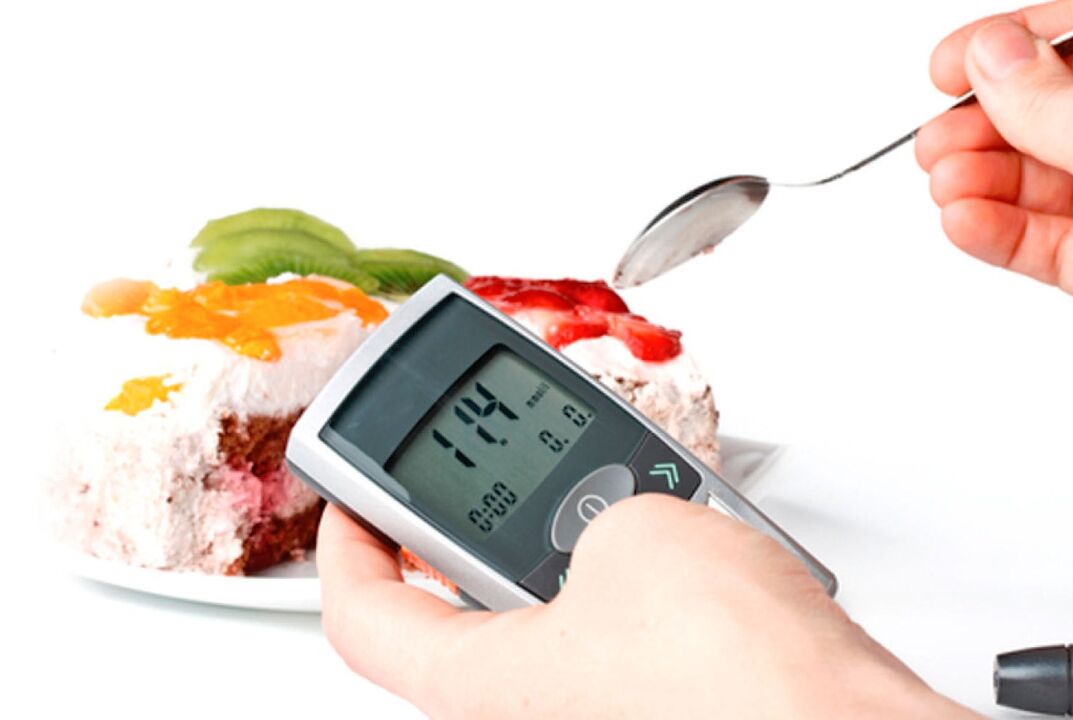
The first fact is that the diabetic diet includes the restriction of all direct sugars: diabetic foods (first, second course and even desserts) do not contain sugar or honey, desserts are excluded - cakes, ice cream, desserts (apple pie, fruit puddings). , pancakes, etc. c. ), biscuits, sweets, cakes, chocolate, sweet drinks and juices, etc. , fatty and fried foods, fatty meats and sausages, beer, alcohol, white bread or black bread (usually with added caramel) and any products made from white flour.
In addition, dried fruit, grape wine, plums and pears should be completely avoided. For alcoholic beverages, turn off beer, drink only dry wine, up to 200 ml per day, use spirits only as a last resort and extremely clean. Remember to include alcohol in your daily caloric intake.
Yes
Eat only wholemeal bread. Meat can be cooked, but only lean!
Be careful with additives, if you want to make dumplings or dumplings, do not forget to follow the portion size. Rice, pasta, potatoes are more suitable.
In the case of diabetes, vegetables should be included in the recipes (which should also be eaten raw), as they contain vitamins, minerals, protein and almost no (or minimal) sugar. Carrots, peas and corn should be restricted to vegetables. The fruit can be consumed no more than once a day, preferably as a morning snack.
It is recommended to divide the food into 4-6 small meals a day, to prepare a light snack in the evening. Diabetic recipes and the amount of food should be chosen depending on whether the body weight is within the normal range or the need to reduce it, as well as how much exercise during the day.
Exercise for at least 30 minutes a day is appropriate and recommended for all diabetics; speed walking, running, swimming, cycling, etc. work well.
You must complete at least 10, 000 steps each day.
It is quite understandable that sometimes the diet will seem intolerable and there will be an overwhelming urge to eat something "forbidden". Once a month you can relax and pamper yourself with dark chocolate (chocolate is suitable for cooking or one that contains 60-70% cocoa).
If you decide to change your eating habits, it is recommended that you first consult your doctor or specialist, such as a diabetologist, to further adjust your diabetes medication and insulin doses, if any. It is advisable to perform self-monitoring using a glucometer.
Nutrition and regimen are indispensable (neither treatment, nor insulin, etc. ) and are the key to successful treatment of all diabetics! These facts are confirmed by a large number of specialized scientific studies in our country and the world.
Diet for diabetes
Prohibited products:
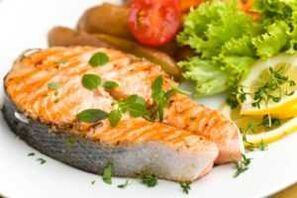
- Fatty dairy products.
- Yolks and their products.
- Sausages.
- Fatty meat - goose, duck.
- Concentrated alcohol.
- Free sugars.
- Sweets.
- Salty snacks - chips, nuts, snacks, etc.
Recommended products:
- Fats - butter, margarine, milk and dairy products - are low in fat.
- Meat - young cattle (veal, pork, lamb, chicken, rabbit, turkey).
- Fish - freshwater and marine.
- Deer meat.
- Ham - in small quantities.
- Vegetables - all kinds, including legumes.
- Fruit - in small quantities.
- Bread is whole grain.
Technological methods that can be used are cooking, stewing, grilling, less often - baking.
Below are some diabetes recipes, from soups and main courses to desserts suitable for treating diabetes.
The amount of raw materials contained in such diabetes recipes is provided for 4 servings.
Dietary soups for diabetics
Soybean soup
Ingredients:
60 g soybeans, 20 g flour, 20 g butter, 20 g onions, garlic, parsley, salt.
Preparation:
Soybeans must be cooked until canned or canned. Whipped finely chopped onion in butter, add flour and add hot water. Simmer, add boiled soybeans, chopped garlic with salt and chopped parsley. Cooked soup is best used hot.
Dietary main meals for diabetics
Fried flounder
Ingredients:
600 g flounder, 20 g butter, salt, paprika, 10 g wheat flour, 1 lemon.
Preparation:
Wheat flour mixed with salt and ground pepper, sprinkle portions of fish, sprinkle with oil and grill. Taste the finished food with lemon juice and garnish with lemon slices.
Goulash
Ingredients:
320 g of meat (beef, veal, pork, rabbits, but preferably assorted), 200 g of tomatoes, 40 g of oil, 1 onion, 20 g of potatoes, salt, parsley, marjoram, cumin.
Preparation:
Peeled meat cubes quickly fry in oil and sprinkle with hot water. Add salt, chopped tomatoes, peeled whole onions and sauté. When the meat is almost tender, add peeled, finely grated raw potatoes, ground cumin and marjoram. Remove the onion from the finished stew (if boiled, then leave) and add finely chopped parsley.
Dietary vegetable dishes for diabetics
Stuffed tomatoes
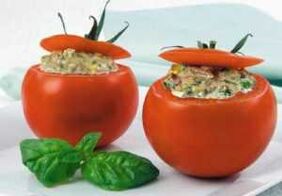
Ingredients:
4 large hard tomatoes, 120 g poultry, 20 g rice, 20 g butter, 1 egg, salt.
Preparation:
Cut the tops of the washed tomatoes and remove the middle. Washed rice boiled in salted water, mix with minced poultry, salt, add beaten egg and mix well.
The prepared tomatoes are filled without mixture with the resulting mixture, cover them with the cut ends and place in a lightly oiled container. Add hot water and simmer, put the lid on.
Boil the removed core, grind and add to the finished food.
Vegetable risotto
Ingredients:
160 g rice, 20 g carrots, 20 g cauliflower, 15 g celery, 15 g parsley, 10 g corn, oil, parsley, salt, 120 g hard cheese.
Preparation:
All peeled vegetables are cut into cubes or grated on a coarse grater. For cauliflower, cut off the leg and divide the head into small inflorescences. Rinse the corn. Rinse the rice, add oil, water, salt and bring to a boil. After a while, add the prepared vegetables and simmer until soft. Serve the finished risotto, sprinkled with chopped parsley and grated hard cheese.
Dietary cold meals for diabetics
Cottage cheese with vegetables
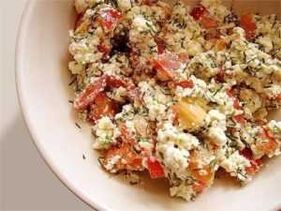
Ingredients:
200 g of cottage cheese, 40 g of milk, 1 tomato, 20 g of leeks, 40 g of cucumber, salt, ground cumin.
Preparation:
Peel the tomatoes, remove the flesh from the seeds, peel the leeks and cut into thin strips, grate the cucumbers on a coarse grater.
Salted cottage cheese whipped with a frother with milk.
To the resulting curd mass add all the prepared vegetables, ground cumin to taste.
Cottage cheese snack
Ingredients:
200 g of cottage cheese, 2 garlic cloves, sesame seeds, salt, green onions, dill, parsley.
Preparation:
Grind the garlic with salt and mix with cottage cheese. If necessary, dilute with water to form a dense mass. Finely chop the green onion and stir in the sesame seeds. From the boiled garlic-curd mass form a roll, wrap in a mixture of green onions and sesame seeds so that its surface is completely covered. The finished rolls are left to cool to harden.
Dietary salads for diabetics
Apple and chicken salad
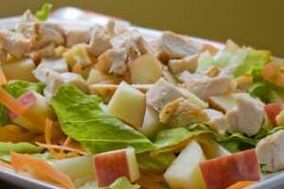
80 g carrots, 60 g bean sprouts, 200 g sour apples, 100 g boiled chicken breast, salt, 10 g butter, lemon juice.
Preparation:
Peeled carrots on a coarse grater, the apples are washed, the cores are removed, cut into thin slices and then into thin strips, just like ready - made chicken.
Mix all the prepared ingredients together, add bean sprouts, salt, sprinkle with oil and lemon juice. Stir well again and leave to cool.
Five Myths About Diabetes
Diabetes is a chronic lifelong disease that is fraught with complications. The people with whom it happens must learn to live with it and adapt their rhythm and way of life to it. Despite the fact that this topic is widely discussed in society, there are still many myths about the disease. Let's look at the key. So then…
Myth: Diabetes is a disease of obese people.
People rarely recognize the difference between type 1 and type 2 diabetes. Type 1 diabetes can develop in childhood. The disease is genetically determined and insulin therapy is required. In contrast, type 2 diabetes is often associated with being overweight, as mentioned above. The disease is characterized by a slow onset.
Myth: Diabetes is a "senile" disease.
As there are many obese children and young people today, type 2 diabetes is increasingly affecting younger age groups.
Myth: Diabetics should never eat sweets and should follow a strict diet.

Diet is important, of course, but it is not about eliminating carbohydrates completely. Diabetics cannot eat simple sugars (glucose), beet sugar (sucrose) and honey. However, they may use artificial sweeteners. Diabetics should eat complex carbohydrates (starch).
With diabetes, sweets can be replaced only by sweets - sweeteners, fruits. For example, you can eat two or three peaches, two oranges or three apples. Or you can eat something made with sweeteners.
Nutritionists recommend making sweets at home, this approach ensures that the dishes are free of harmful preservatives and additives. From the available and permitted products you can prepare any delicacy, as well as pamper yourself and your loved ones with a delicious dessert.
Myth: Diabetics can eat well, they just need to rule out sugar.
As mentioned, the treatment of diabetes involves the regulation of carbohydrate intake. Complex carbohydrates in your diet should be in the same amount every day as prescribed by your doctor. The prescribed amount should be distributed throughout the day, as the diabetic must eat regularly. The principles of a diabetic diet are in line with the principles of a balanced diet, so that it is not just about regulating the sugar content, but about the whole composition of the diet. The essence of the disease lies not only in the metabolic disorders of carbohydrates, but also in the levels of proteins and fats.
Myth: Diabetics can eat as much fruit as they like.
Fruits contain a certain amount of carbohydrates. Obviously, this is the content that a diabetic should include in their daily diet. As a result, you cannot eat fruit in any quantity. It is advisable to choose those varieties that contain a minimum amount of carbohydrates and are rich in fiber, which is important for digestion.














































































